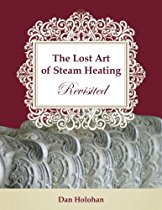The advent of D/C motors
Who was the greatest inventor of the 20th century?

Who was the greatest inventor of the 20th century?
In my mind it wasn’t Edison or the Wright brothers or the rocket scientists or the solid-state engineers. It was Nikola Tesla, a Serbian immigrant who once worked for Thomas Edison. Tesla’s revolutionary ideas were rejected by Edison.
Without Tesla’s inventions such as those that brought about the introduction of A/C power transmission and the creation of the A/C induction motor, this world wouldn't be nearly as advanced as it is today. Also, air conditioners and refrigerators likely would not be common household items. The sad thing is Tesla virtually gave away some of these crucial patents.
Yes, the A/C induction motor, which has been used to power the fans and compressors of cooling systems (as well as most other powered devices), played a significant role in 20th century development and was the most energy-efficient type of motor requiring no sparking brushes (such as those used in early D/C motors).
But the development of solid-state power drives has brought about the creation of more efficient brushless D/C motors that can easily be adapted for speed control. This is why we will see more of these motors used for both fans and compressors in our industry.
What makes them more efficient? The ability to easily and relatively inexpensively vary motor speeds is important in air conditioning because everything is variable. Indoor temperatures and outdoor temperatures change as people adjust their thermostats and outdoor temperatures get warmer and cooler. Having a wide range of fan and compressor speeds is important to maintain peak system efficiency. However, D/C motors also are inherently more efficient. Why?
Understand that whenever you fluctuate the magnetic fields in the steel stators and armatures that drive the motors, as is done by A/C current, it not only creates the magnetism that's needed, but it also generates eddy currents in the steel, which wastes energy.
And to minimize such losses, you'll notice A/C motors are made of bundled thin strips of steel that are electrically insulated from each other to minimize internal electrical conduction.
On the other hand, the very nature of D/C motors is they develop very little eddy currents since there is little fluctuation in the incoming power (they're just pulsed on and off). And with the introduction of solid-state drives, no brushes are needed because microcomputers just pulse each of the windings in turn, which attract the poles of a permanent magnet. (So, pulse winding 1, and the magnet is attracted to that position, then pulse winding 2, etc.) Therefore, a computer can set the speed of the motor almost infinitely.
What is the problem with such D/C motors? Up to now they've been expensive and require the added expense of a microcomputer drive.
However, you'll find the more common such systems become the less they will cost; and D/C motors surely will be one of the most important new tools in reaching the ever-rising system-efficiency levels being mandated by governments.
Looking for a reprint of this article?
From high-res PDFs to custom plaques, order your copy today!





